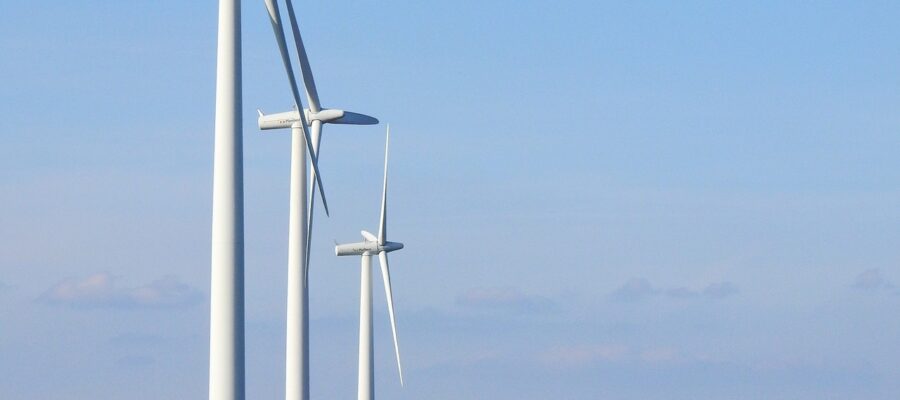Due to the increase in the consumption of global energy and the probable exhaustion of non -renewable energy sources in the world, means to explore and use alternative energy sources are implemented. The use of alternative energy sources can be both beneficial and difficult. We explore the various advantages and disadvantages of alternative energy sources.
The advantages and disadvantages of renewable energies:
Lol of the main advantages The renewable energies is thatAre renewable, therefore durableAnd that they will never end. Even more important, renewable energies produce little or no refusal than polluted or has harmful effects on the environment.
Some countries that use renewable energies as also show other sources of energy Economic advantages, Especially in many regions. Most of their projects are far from urban centers and capital. They were able to increase the use of local services and tourism.
The general disadvantage The use of renewable energies is that‘It is difficult to produce large quantities of electricity similar to those of conventional fossil fuels. Another problem common to alternative energy sources is the reliability of the energy supply. Since it is naturally generated, renewable energy depends on weather conditions.
Another disadvantage or disadvantage Alternative energy sources is that it is relatively more expensive To install the necessary equipment for the production of energy.
In addition, some techniques allow you to use energy differently. For example in agriculture, The hydroponies It allows you to save significant water. For example, an above -ground culture based on the use of clay balls for hydroponics will save water by about 70%. The hydroponia also allows you to cultivate food without pesticides and not polluted by soils that contain pesticides.
Here are the various advantages and disadvantages of alternative energy sources:
Solar energy

The sun is Excellent source of energy Since it is free and effective. It is possible to maximize the energy given by the sun to replace traditional electricity. But there are limits, such as areas with high latitude and places with frequent rains are places that are not able to produce effective solar energy.
Wind energy
The wind is also an effective source of electricity. It is possible that wind energy can replace up to 20 % of the total electricity consumption in the future. It is also A very ecological source of energyBecause harmful gas is not produced during energy conversion. The location is a very important factor in the use of wind energy, high latitudes and coastal lines are good places to install wind turbines. There is also a relatively large area to install a sufficient number of wind turbines.
Hydroelectric energy and tidal energy
These two types of energy come from the water. Hydroelectric energy is mainly produced by dams. The energy of the tides, on the other hand, uses the natural tides of the ocean. The production of energy from the water is Another way to produce energy. However, Has several disadvantages. The construction of river dams as sources of hydroelectric energy is very expensiveWhile the source of the tide source depends a lot on the ocean. Since the oceans tend to be unpredictable, there are only 9 seats in the world suitable for this type of energy source. It is also said that tide power plants have negative effects on birds and migratory fish.
Biomass
Biomass is made up of fermentated animals, agricultural crops, cereals and other natural products. It can be used To produce alcohol and replace petrol needs. Maximizes waste as a source of alternative energy. The disadvantage is that it always produces greenhouse gases.
As global energy consumption continues to rise, concerns about the depletion of non-renewable energy sources have become more pressing.
In response, many countries and organizations are turning toward alternative energy sources—such as solar, wind, hydroelectric, geothermal, and bioenergy—as sustainable solutions to meet future energy demands.
The benefits of alternative energy are numerous. First and foremost, these sources are renewable, meaning they do not run out over time. Unlike fossil fuels, they can be harnessed continuously, reducing our reliance on finite natural resources. Additionally, most alternative energies are far cleaner for the environment, producing little to no greenhouse gas emissions. This contributes to the fight against climate change and helps reduce air and water pollution. Moreover, the development of alternative energy industries can create new job opportunities and foster technological innovation.
However, the transition to alternative energy also presents challenges. The initial investment costs for infrastructure, such as solar panels or wind turbines, can be high. Some renewable sources, like solar and wind, are intermittent—they depend on weather conditions and may not provide a constant supply of energy. There are also geographical limitations, as certain areas may not be suitable for specific types of energy production, such as geothermal or hydroelectric power. In some cases, the production and disposal of alternative energy technologies can have environmental impacts of their own.
In conclusion, while alternative energy sources offer a promising path toward a more sustainable and environmentally friendly future, they are not without limitations. The key lies in finding a balanced approach—investing in innovation, improving infrastructure, and combining various sources—to overcome these challenges. By doing so, societies can reduce dependence on non-renewable resources and move toward a cleaner, more secure energy future.
latest posts published

Do difficult things!

Does yoga start alone, at home, good or bad idea?

Connected watches: take off!

How to alleviate and avoid them

How to lose your thighs? Exercises, suggestions and nutrition

Remote to sport in winter, the light track!

Solutions, exercises and suggestions to help you!

Substitutes of meals: real slimming allies?

Dry January: Return of experience!


